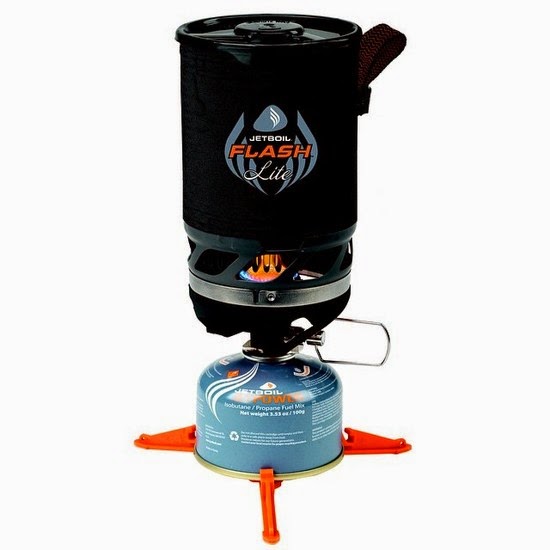What are the tricks to getting good stove fuel economy? Are some stoves more fuel efficient than others? Herein, I address this and more. Read on, dear reader, read on.
| A Kovea Supalite in use with a heat exchanger pot. Heat exchanger pots save fuel. |
 |
| An uber cheap stove from Amazon. Is it fuel efficient? Who knows? |
- Pick a sheltered spot. On top of a rock or picnic table might be convenient, but it's going to be windier up there. Set up your stove on the ground behind a rock or log. On a windy day, this is absolutely the most important thing to address in terms of efficiency, far more important than how you actually run the stove itself.
- Turn it down. High heat = inefficient. This is the number one mistake of new stove users – they open the valve 100% (i.e. maximum), which is the absolute last thing that you want to do if you want to be efficient. Running your stove at say 30% of max will be far more efficient. Lower heat = more efficient. Of course it's going to take a bit longer when you turn down the heat. Here's where you'll want to experiment. You need to find the balance between speed and efficiency that works for you.
- Use a windscreen. Yes, even on an upright type canister stove (like a Pocket Rocket), just not a full 360 degree windscreen. If you use a (partial!) windscreen with an upright canister stove, be careful to check the canister frequently with your hand. If it feels so hot that you can't leave your hand resting on the canister, take immediate steps to cool things down. See Canister Stoves and Wind before you use a windscreen on a canister stove.
In general windscreens add to efficiency in two ways. They a) prevent wind from blowing away the heat and b) focus the heat on the pot. Because a windscreen focuses heat, it's always good to use a windscreen even on a day where it isn't particularly windy. - Use a lid. A tight fitting lid without a strainer or other openings is best. Escaping steam = escaping heat = inefficient.
The above can be used with pretty much any stove and pot combination. There are some additional things that one can do if one is willing to make some additional gear purchases; I list those below.
| An MSR Windburner uses a heat exchanger pot to achieve high levels of efficiency. |
- Use a wider pot. Tall, skinny pots wind up having flames go up the sides, wasting heat. A wide, squat pot catches that heat better.
- Use a heat exchanger pot. A heat exchanger pot (e.g. MSR Reactor, Jetboil Flash, Primus Eta Express, etc) can save a lot of fuel. Now, you will save fuel with a heat exchanger , but usually the heat exchanger weighs more than the weight of the fuel you save. In other words, using a heat exchanger is often heavier overall. However, if on a trip you prevent having to carry a larger or second canister, a heat exchanger can actually save you weight. See Can a Jetboil Save Weight? for specific examples and a full discussion.
- Use a darker colored pot. This is pretty minor compared to the others, but a darker colored pot will absorb more heat than a shiny reflective one.
| A windscreen makes any stove more fuel efficient. Featured in this photo: A Bobcat system from Flat Cat Gear. |
| A Ti-Tri Cone from Trail Designs – efficient by design. |
So, there you have it, some basic tips and tricks for stretching your fuel.
I thank you for joining me,
HJ


